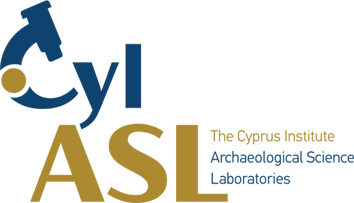This project was conducted in the Summer of 2020 as the MSc dissertation of Christiana Kelepeshi at the University of Oxford under the supervision of Dr Chris Doherty. Due to the Covid-19 impact that year, the laboratory work was completed at the A.G. Leventis Chair for Archaeological Sciences at the Science and Technology for Archaeology and Culture Research Center (STARC) of the Cyprus Institute.

Polis Chrysochous-Petrerades
Medieval glazed pottery production in Cyprus has been studied through a number of recent and current projects, and the name of the A.G. Leventis Foundation is linked to several important studies in this respect. This project concerns the analytical investigation of samples from a medieval domestic structure located north of the Basilica E.G0 at the site of Polis Chrysochous-Petrerades, Cyprus. The assemblage includes samples from different local Cypriot glazed wares spanning from the 13th (Plain Incised-Sgraffito Ware, One Colour Incised-Sgraffito, Brown and Green Incised-Sgraffito, Brown and Green Sgraffito, Slip Painted) to the 16th c. AD (Green Painted Ware). It includes also imported Aegean wares of the mid. 12th– 13th c. (Green and Brown Painted and Incised-Sgraffito). Furthermore, glazed frying pans and unglazed coarse wares (cooking pots, jars) were also selected in order to investigate their technological differentiation compared to fine-glazed wares.
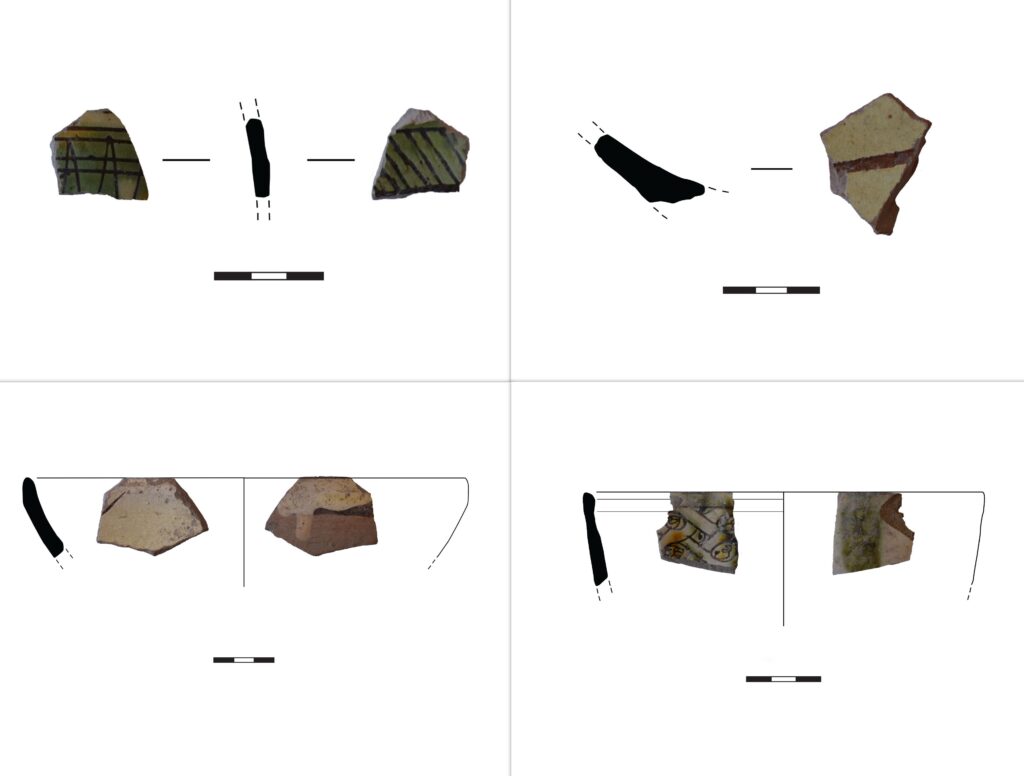
After the initial macroscopic observation of the samples, polished cross-sections were prepared for each sherd which were then studied under the optical microscope in reflected light in order to examine the microstructure of both slips and glazes. Afterwards, the polished cross-sections were carbon-coated and studied using Scanning Electron Microscopy coupled with an Energy Dispersive x-ray Spectrometry system (SEM-EDS) in order to characterise chemically the ceramic fabrics, slips and glazes.
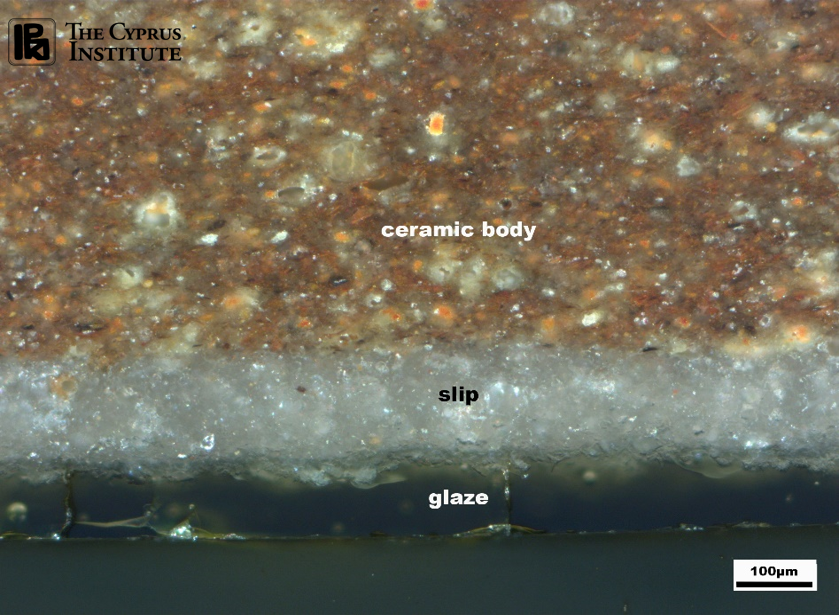
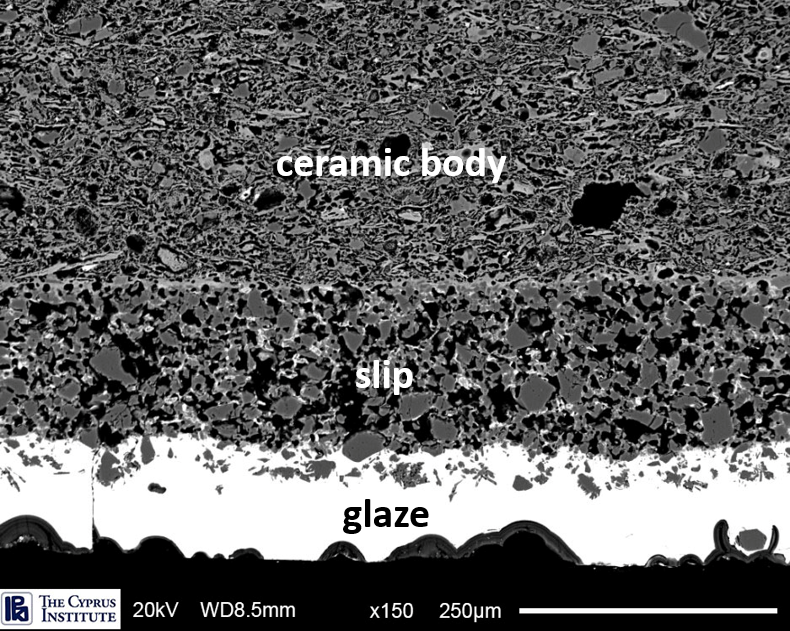
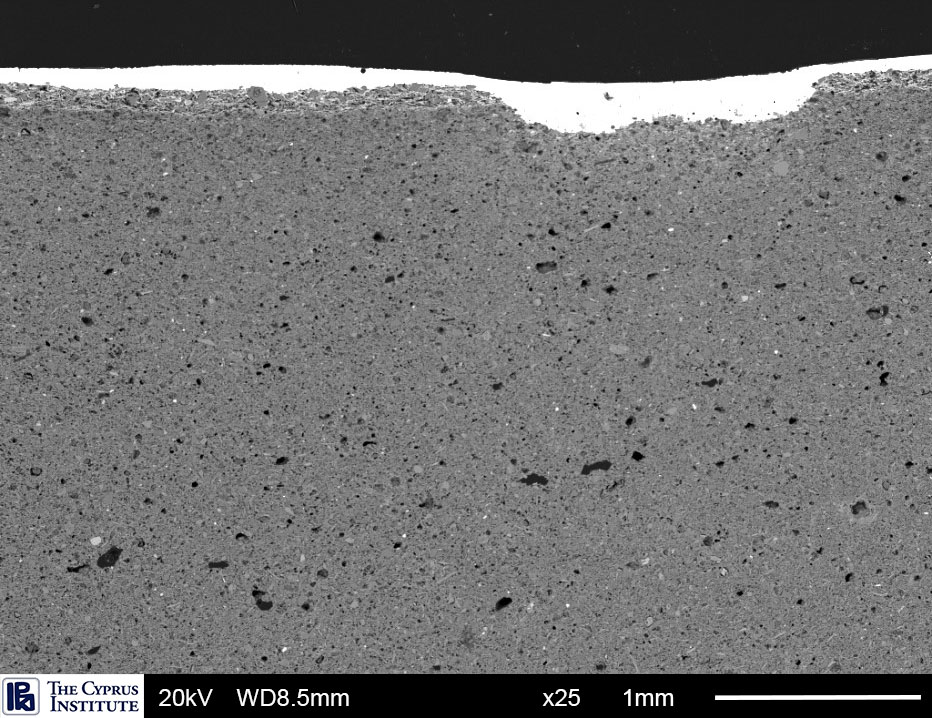
The results of this study revealed the diverse character of the assemblage which contains products of different workshops. Although all glazed sherds are characterised by high lead glazes following the technological tradition of the wider Byzantine world, variations exist between different workshops in terms of their glaze manufacturing methods and slip traditions. Furthermore, glazed and unglazed coarse wares were probably produced at different workshops than glazed tableware since they are showing a consistent preference for non-calcareous, iron-rich clays. The heterogeneous character of the assemblage demonstrates the active participation of Polis Chrysochous within the regional and interregional trading routes of the period and reflects the existence of a dynamic medieval community.
Building on recent work at the Archaeological Research Unit of the University of Cyprus and STARC (e.g., Ting et al. [2019], [2021]) and the ongoing project on [Ottoman ceramic workshops] in the Eastern Mediterranean by Jelena Zivkovic, a petrographic study of the samples is being planned to investigate further the provenance of these sherds.
Acknowledgements
Dr Brunella Santarelli provided training in sample preparation and SEM-EDS analysis, Drs Jelena Zivkovic and Maria Dikomitou assisted with the research planning and the methodology used, and Anna-Maria Sdralia completed most of the sample preparation. Assoc. Prof. Athanasios Vionis of the University of Cyprus helped with sampling selection and the typological identification of the sherds under study. The generous support of the A.G. Leventis Foundation enabled us to offer Christiana access to our facilities when the need arose. Permission from the excavators of the site of Princeton University and the Department of Antiquities to study the material, including invasive sampling, are greatly appreciated. The MSc studies of Christiana Kelepeshi were supported by grants from the University of Oxford (Edward Hall Memorial Fund), the Greek Archaeological Committee of the UK (Matti Egon II Scholarship) and the Sylvia Ioannou Foundation, and were completed with Distinction.
